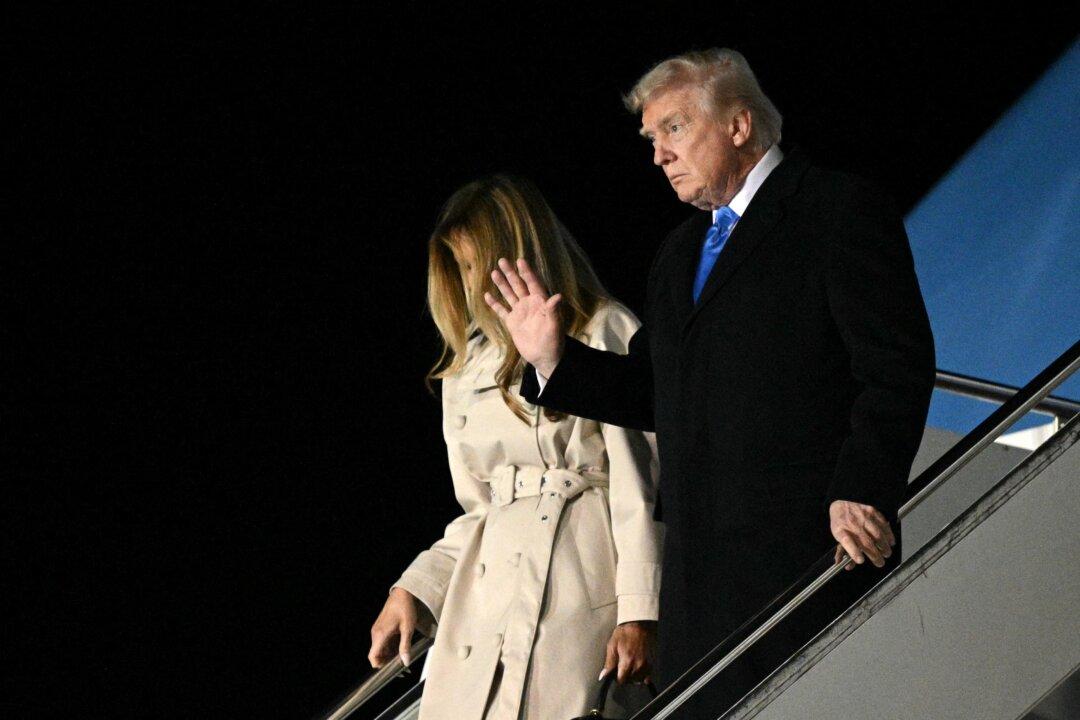The Philippines said on Monday that a Chinese coast guard vessel used a “military-grade laser” against its ship in the disputed South China Sea last week to impede a resupply mission, temporarily blinding its crew.
The incident occurred on Feb. 6 in Ayungin Shoal, also known as the Second Thomas Shoal or Renai Reef by China, of the Spratly Islands about 105 nautical miles (195 kilometers) off the Philippine province of Palawan.
Although the 1982 United Nations Convention on the Law of the Sea (UNCLOS) classifies maritime areas within 200 nautical miles of coastal nations’ borders part of their exclusive economic zones, China’s ruling communist party (CCP) disputes Filipino sovereignty over the island—which is part of the Spratly archipelago of 100 small islands and reefs claimed in full or part by the Philippines, Malaysia, Brunei, Vietnam, and Taiwan, and according to its “nine-dash line” in 1952, China.
The Philippine coast guard (PCG) said its vessel was assisting a navy resupply mission in Ayungin Shoal in the South China Sea—which Manila calls the West Philippine Sea—when the Chinese ship beamed a green laser light at it.
The Chinese ship also made “dangerous maneuvers” by approaching within 150 yards (137 meters) of the Philippine vessel’s starboard quarter.
“The deliberate blocking of the Philippine government ships to deliver food and supplies to our military personnel on board the BRP Sierra Madre is a blatant disregard for, and a clear violation of, Philippine sovereign rights in this part of the West Philippine Sea,” it stated.
Armed Forces of the Philippines spokesperson Colonel Medel Aguilar told reporters of the “offensive and unsafe” incident, “I think it is time for the Chinese government to restrain its forces so that it does not commit any provocative act that will endanger [the] lives of people.”
The PCG said Chinese vessels had also disrupted a Philippine resupply mission in the Ayungin Shoal last August.
A Chinese coast guard ship allegedly “removed the cover of a 70-millimeter naval armament” when a Philippine ship approached the Ayungin shoal.
“Despite the dangerous maneuver of the much larger [Chinese coast guard] ships and their aggressive actions at sea, the PCG ships will always be in the West Philippine Sea to sustain our presence and assert our sovereign rights,” the Philippines side noted.
Philippines President Ferdinand Marcos Jr summoned China’s ambassador on Tuesday to express his “serious concern” over China’s actions in the South China Sea.
Marcos relayed his concern “over the increasing frequency and intensity of actions by China against the Philippine Coast Guard and our Filipino fishermen”, including its use of “military grade laser” against one of Manila’s vessels, his office said in a statement.
China’s Foreign Ministry responded by claiming that a Philippine coast guard vessel intruded into the waters of the Renai Reef “without Chinese permission.”
‘Provocative and Unsafe’
The United States has criticized the Chinese ship’s use of laser devices against the Philippine coast guard vessel as “provocative and unsafe,” calling on Beijing to abide by the UNCLOS to which China is a signatory.Price said that Beijing’s operational behavior “directly threatens regional peace and stability, infringes upon freedom of navigation in the South China Sea,” and undermines the rules-based international order.
He reaffirmed that any armed attack on Philippine armed forces, public vessels, or aircraft would invoke U.S. mutual defense commitments with the Philippines.
The Philippines and the United States are allies under the 1951 Mutual Defense Treaty, which dictates that the two nations will defend each other if either is attacked.
Vietnam, Malaysia, Taiwan, and Brunei have also clashed with the CCP over its claims in the Sea.
His predecessor, Rodrigo Duterte, filed 388 protests over his six-year term as president.
Marcos visited Beijing last month when Chinese leader Xi Jinping said China was ready to manage maritime issues “cordially.”
The confrontation took place on Feb. 17, 2022, as the Australian P-8A Poseidon aircraft was monitoring a Chinese Navy vessel sailing through the Arafura Sea—international waters that are inside Australia’s exclusive economic zone.





